
Life is messy. No matter how careful we are, there will be spills and splashes– and stains. We researched the tools and techniques you need to remove almost every kind of stain there is from your favorite T-shirts, hats, and other clothing all with everyday items.
The important thing to know is that different types of stains require different treatments. Substances react differently to different chemicals and water temperatures. If you use the wrong solution, you could actually set in the stain, make it look worse, or damage the fabric. Avoid making more of a mess by using this handy and powerful guide and make sure you follow best practices for washing and drying. Read on to learn how to get a stain out of a t-shirt and other apparel!

Essential stain removal tips
If you're looking to learn how to get a stain out of a t-shirt, or any other kind of apparel, then follow our essential stain removal tips below:
- Treat all stains as quickly as possible. As stains dry, they get set in and difficult to remove. Also maybe don’t leave dirty laundry out for a week.
- Always spot test any solution on a small hidden section of clothing before using the full treatment. It will be your secret. No one has to know.
- Apply stain removal products to the back of the fabric so it pushes the substance out the stained side. Push it out, shove it out, way out.
- Some stains remove best with cold water or even ice. See the list below about particular stains. Or I could just tell you it’s gum. And adhesive.
- Always blot the stain first rather than scrubbing, which can push the substance deeper into the fabric. Seriously what’s wrong with you.
- Most liquid detergents can also be used as a pre-treatment on the stain before regular laundering. We all know that. But it goes on the list.
- After laundering clothing, always check to make sure stains are gone before putting them in the dryer. If you can’t find any, that could mean they’re gone.
- Avoid using the hot setting on the dryer, which can set in the stains. Use the cool setting or air dry. Or blow on it rapidly for about 3 hours.
Household solutions for stain removal
- Water – Your first line of defense for most stains, water is basically free, plentiful, and doesn’t cause any damage to fabrics. However, using hot or cold water can make a big difference in effective stain removal. In Philadelphia, use wooder.
- Vinegar – Probably the most effective natural stain remover, vinegar has been used for centuries and has many uses. It works better in certain types of stains than it does in others. Use sparingly and carefully on wool. Can’t get crazy with wool.
- Hydrogen peroxide – Another effective natural stain remover, especially on blood and rust. It has a bleaching effect without destructive color changes. It also has disinfectant properties. And it fizzes. Like the magical chemical it is.
- Detergents and stain removers – Most products contain enzymes that help break down and release stubborn stains, especially organic substances. Use to pre-treat and blot stains before laundering. Or scrub, if it’s bad. Go to town on it.
- Rubbing alcohol – A natural and effective solvent that is not as harsh as it smells (don’t breathe it in too much though). It’s especially good for removing inks, dyes, adhesives, and chemical-based stains. Rubbing is between blotting and scrubbing.
- Ammonia – A common and useful cleaning chemical, although it is harsh and can be extremely dangerous if mixed with bleach (never do that). Typically it’s diluted with water and in a spray bottle. Make sure to label it so you don’t spray your cat.
- Dish soap – A mild and surprisingly effective solvent for a variety of purposes. Lots of people swear by the Dawn brand, but many products do the trick. Mixed with water, it cuts through grease and most condiments. Dawn to grease: I’ll cut you.
- Mineral spirits or acetone – These are needed to remove paint, nail polish, and other serious stains.. They can be harsh on synthetic fabrics, so it’s best for cotton and some blends. Test it in a small hidden area first. In your secret spot.
- Bleach – Chlorine bleach is harsh and dangerous but can be extremely effective for removing tough stains. Be careful as it can remove dye from clothing. It should always be diluted and never mixed with ammonia. And by never we mean never ever.
- Non-chlorine bleach – Products that clean and disinfect without chlorine, sometimes known as oxygen bleach. They usually use hydrogen peroxide as their main ingredient, or if in powdered form, sodium percarbonate. Yes, I had to look that up.
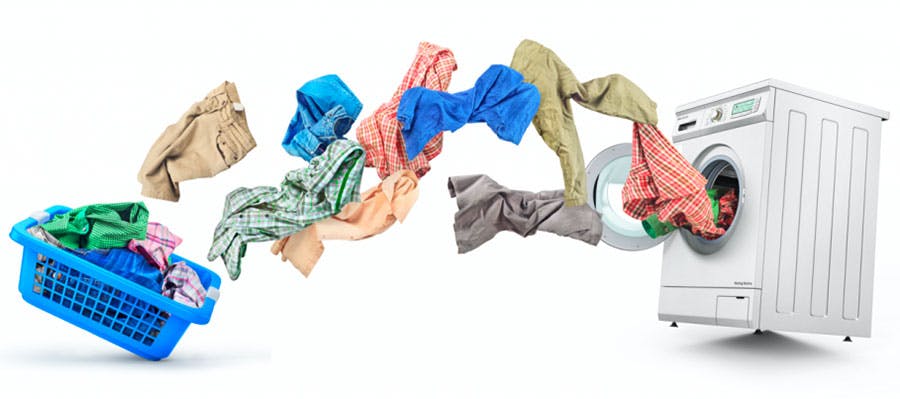
Types of fabrics and how to treat them
- Cotton – Cotton can withstand most, if not all the treatment options described here and has the best chance for stain removal. Hot water, cold water, repeated washing and scrubbing, cotton can handle it.
- Blend – Most blends have some percentage of cotton so these treatment options can apply. Some of the more harsh treatments described here can damage it, so be careful and test it first if you can.
- Synthetic – This includes polyester and rayon, fabrics that can be tricky for stain removal, especially grease and paint. Avoid using harsh solvents like ammonia or acetone, as they can melt or degrade the material.
- Silk – One of the more delicate fabrics. Some of the chemicals and techniques listed here can damage silk if you’re not careful. We advise following manufacturer instructions, or just taking it to the dry cleaners.
- Wool – Another delicate fabric, it should not be washed repeatedly or scrubbed, although some of the less harsh techniques and chemicals can be used. Use Woolite, a mild detergent, or take it to the cleaners.
Important: Always find the manufacturer label and read it carefully to find out the type of fabric (usually on the inside seam). It will often tell you the exact percentage of materials if it’s a blend. You will also find washing instructions that should be followed for best results.
How to remove specific stains and substances from clothing
In all of the following cases, stain-removing products can be used (follow their instructions), but we’re providing you some home remedy versions that work just as well, so you can save some money and avoid toxic chemicals at the same time. You might be surprised at how powerful everyday products can be as you learn how to get a stain out of a t-shirt and other items of clothing.
Most of these tips can also be used for washing hats and other hard-to-clean items.
How to remove oil and grease stains from clothing

- Sprinkle with corn starch and let sit for 10 minutes (salt can also work to absorb the oil).
- Flush the backside of the fabric with cold water.
- Blot with a clean cloth and dish soap solution (1 part soap to 10 parts water).
- Pre-treat with a stain remover.
- Launder with hot water.
How to remove ink stains from clothing

- Blot with rubbing alcohol.
- Repeat until the stain is diminished.
- Pre-treat with stain remover.
- Launder with hot water.
How to remove blood stains from clothing

- Flush the backside of the fabric with cold water to remove excess.
- Rub the stain together with the fabric to break it up.
- Flush with hydrogen peroxide.
- Launder with cold water.
How to remove dye transfer stains from clothing

- Mix a solution of water and oxygen-based bleach (follow instructions on package).
- Soak the clothing in the solution overnight.
- Launder with cold water.
- Repeat the process until the stains are gone.
How to remove coffee stains from clothing

- Flush the backside of the fabric with hot water.
- Blot with a clean cloth and dish soap solution (1 part soap to 10 parts water).
- Air dry (in the sun if possible).
- Pre-treat with a stain remover.
- Launder with cold water.
How to remove sweat stains from clothing

- Flush the stains with vinegar.
- Flush with hydrogen peroxide.
- Launder with hot water.
How to remove deodorant stains from clothing

- Saturate the stained area with cold water.
- Pour hydrogen peroxide directly onto the stain and let sit for 30 minutes.
- Launder with cold water.
How to remove rust stains from clothing

- Squirt area with lemon juice and sprinkle salt.
- Air dry (in the sun if possible).
- Launder with cold water.
- Alternately, flush with hydrogen peroxide.
How to remove yellow stains (body oil) from clothing

- Flush the stains with vinegar.
- Flush with hydrogen peroxide.
- Launder with hot water.
How to remove chocolate stains from clothing

- Scrape off any excess chocolate.
- Blot with a cloth and dish soap solution (1 part soap to 10 parts water).
- Dab with liquid laundry detergent.
- Flush the backside of the fabric with hot water.
- Launder with hot water.
How to remove red wine stains from clothing

- Cover with salt and let sit for a few minutes.
- Flush the backside of the fabric with hot water.
- Blot with a cloth and dish soap solution (1 part soap to 10 parts water).
- Launder with hot water.
How to remove berry stains from clothing

- Scrap off any excess material.
- Flush with hydrogen peroxide.
- Blot with a cloth and dish soap solution (1 part soap to 10 parts water).
- Launder with cold water.
How to remove poop stains from clothing

- Scrape off any excess material.
- Flush the backside of the fabric with hot water.
- Wash with hot water and some chlorine bleach.
How to remove tea stains from clothing

- Flush the backside of the fabric with hot water.
- Blot with a clean cloth and dish soap solution (1 part soap to 10 parts water).
- Air dry (in the sun if possible).
- Pre-treat with a stain remover.
- Launder with cold water.
How to remove mustard stains from clothing

- Flush with vinegar.
- Blot with a cloth and dish soap solution (1 part soap to 10 parts water).
- Pre-treat with stain remover.
- Launder with cold water.
How to remove nail polish from clothing

- Flush with acetone or paint thinner.
- Blot with cloth and dish soap solution (1 part soap to 10 parts water).
- Launder with hot water.
How to remove lipstick and makeup stains from clothing

- Blot with cloth and mineral spirits.
- Blot excess with a cloth after letting sit for 15 minutes.
- Sponge with an ammonia solution (1 part ammonia to 2 parts water).
- Rinse the backside of the fabric with cold water.
- Launder with cold water.
How to remove mold stains from white clothing

- Gently scrape off excess mold from the surface with a toothbrush or soft brush.
- Mix a bleach solution and apply to the stain or soak (1 part bleach to 3 parts water).
- Allow to soak for several minutes and then launder with hot water.
How to remove mold stains from colored clothing
- Gently scrape off excess mold from the surface with a toothbrush or soft brush.
- Spray white vinegar directly onto the stains.
- Cover with a cloth that’s been soaked in white vinegar for several minutes.
- Let air dry in the sun if possible (sunlight can kill mold spores).
- Launder with hot water.
How to remove Tumeric stains from clothing

- Rinse the backside of the fabric with cold water.
- Soak the item in a solution of half laundry detergent and half water for 20 minutes.
- For white clothing, soak in a bleach solution instead (1 part bleach to 3 parts water).
- Launder with cold water and let air dry (in the sun if possible).
How to remove tomato sauce and ketchup stains from clothing

- Scrape off excess substance with a spoon or dull knife.
- Rinse the backside of the fabric with water.
- Pre-treat the stains directly with laundry detergent or stain remover.
- Let sit for 5 minutes or more, then launder with hot water.
How to remove grass stains from clothing

- Flush the backside of the fabric with cold water.
- Rub the stain together with the fabric.
- Pre-treat with stain remover.
- Launder with cold water.
How to remove permanent marker stains from clothing

- Place the stain face-down on a paper towel.
- Blot the backside of the fabric with a cloth soaked with rubbing alcohol.
- The ink should transfer to the paper towel.
- Repeat with a new paper towel as needed.
- Launder with cold water.
How to remove adhesive from clothing

- Harden the residue by freezing the garment or applying ice.
- Scrape off any excess material with a dull knife.
- Apply mineral spirits, scrub lightly with a toothbrush.
- Rinse through with cold water.
- Apply stain removal product or detergent.
- launder with cold water.
What to buy: The best product for removing sticky adhesives from anything is GooGone.

How to remove old, set-in stains from clothing
The following are proven solutions you can try, but there are no guarantees with old, set-in stains (especially if you don’t even know what it is). If one method doesn’t work, try another. Rinse with water between treatments. While these are alternatives to stain removal products, they can also be used in combination with those for a final hail mary.
- Saturate the area in vinegar and let it soak for 30 minutes or more. Let soak overnight for best results.
- Create a paste using 1 part baking soda and 1 part vinegar. Apply, let sit, then rub with a cloth or soft brush.
- Mix 3 parts hydrogen peroxide to 1 part dishwashing liquid. Apply and let sit for 30 minutes or more.
- Toothpaste is known to remove certain stains. Apply and then use (what else?) a toothbrush to work it in.
- Repeat treatments multiple times, and launder in between. You may find the stains gradually disappearring.
Types of stains that cannot be removed
- Bleach – The dye of the fabric has been removed or faded, there’s no coming back from this.
- Tar – Light tar stains may be removed with acetone or WD-40. Heavy, set-in stains are almost impossible.
- Paint – Once acrylic paint has set in, it’s a done deal. For minimal stains try acetone or rubbing alcohol.
- Burn – If the fibers of the material have been damaged by heat or flame, there’s nothing you can do.
- Sun – The sun’s UV rays can discolor clothing after extended periods, effectively bleaching the dye out.
- Chemical – Certain chemicals can cause a reaction with the fabric or dye and discolor it permanently.
- Dye – Strong dyes, especially in concentrated form, can discolor clothing (or should we say color).
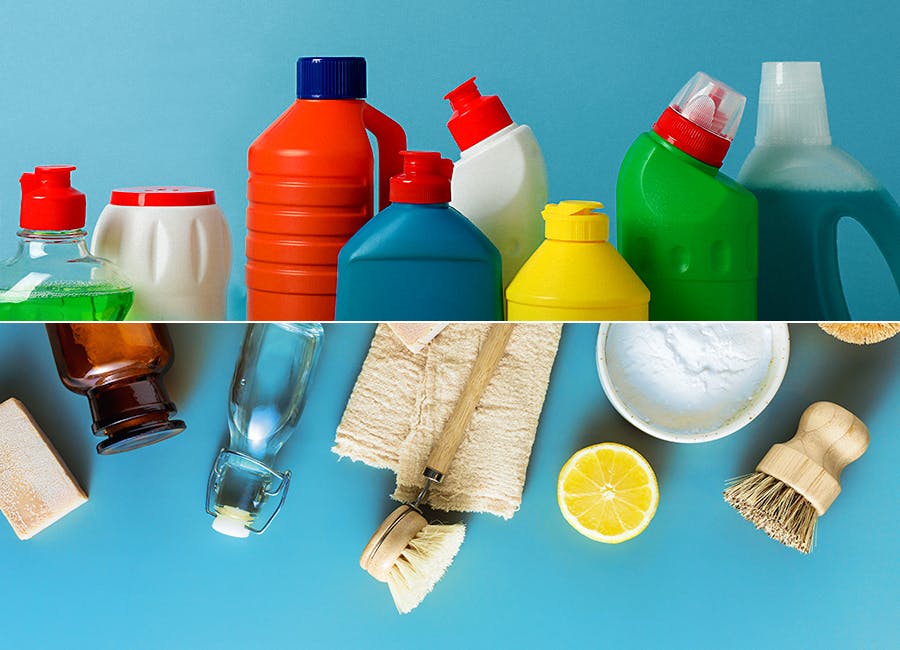
Home remedy methods vs cleaning products
The important thing to know is that many stain removal products are made with some of the same ingredients as the home remedy solutions listed here. In certain cases, home remedies work just as well as stain removal products. One exception is products that contain natural enzymes, which are highly effective at fighting organic stains.

What are enzymatic cleaners?
Many cleaning products contain enzymes. Enzymes are compounds made up of biological molecules (typically proteins) that serve to speed up the rate of chemical reactions and help break down soils, especially the organic types of stains.
Enzymatic cleaners are a natural alternative to more harsh chemicals out there, and safe to use in combination with many other products– in fact, they can boost their effectiveness. You could call it a superpower.
Another benefit of enzymatic cleaners is that they contain beneficial bacteria that consume the molecules of organic materials after the enzymes break them down. For this reason, along with being non-toxic, they’re popular with pet owners. They actively eliminate substances and odors rather than just covering them up. So fresh and so clean.

Best stain-removal products
The following are the highest-ranked stain removal products, according to Consumer Reports. You’ll need to subscribe to get the details on tests, but their bottom line is that some of the top liquid laundry detergents work just as well or better than spray stain remover products. Here are their top picks of stain removers along with a couple detergents:
OxiClean Max Force Spray – The cost is higher than some of the other spray stain remover products, but it’s rated as “excellent” in many of the tests and performs better than its competitors. With 5 minutes of soaking time, it removed oil, dirt, salad dressing, grease, gravy, grass, blood, and chocolate ice cream.
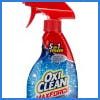
OxiClean Laundry Stain Removal Spray – Less than half the price of Max Force (above), and better than removing coffee, body oil, and dirt, but doesn’t do as well on salad dressing, gravy, chocolate ice cream, or grass. It also did the worst of the bunch on bloodstains. For best results, let it soak overnight.
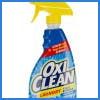
Shout Triple-Acting Spray – The most inexpensive product on their list, and did very well removing body oil, grease, grass, and blood with just 5 minutes of soaking time. Bu other stains like dirt, salad dressing, and gravy required an overnight soak. As far as the most bang for the buck, this one seems to lead the pack.
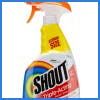
Spray ‘n Wash Laundry Stain Remover Spray – This one earned an ‘excellent’ grade on certain tests like grass and blood but had trouble with black coffee and chocolate ice cream stains. Even after an overnight soak, both stains persisted. If you’re a coffee and chocolate lover, you may want a different product.
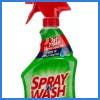
Shout Advanced Action Liquid Gel – This one is the overall lowest-scoring of all the products they tested (but it still made the list). It was rated “excellent” on body oil, grease, blood, and grass. Apparently, it had a tough time with dirt, gravy, coffee, and salad dressing. Only buy this one if it’s on sale for a deep discount.
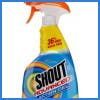
Tide Plus Ultra Stain Release – This detergent works great as a pre-treatment stain remover, destroying dirt, grease, and chocolate ice cream within 5 minutes– better than the other products on the list. For gravy, motor oil, and coffee, OxyClean Max Force reigns supreme. But for a 2-in-1 solution, this is the best bet.
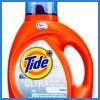
Persil ProClean Stain Fighter – This detergent beats the stain-fighting products on body oil and dirt. For other types of stains, it requires an overnight soak, and although it didn’t do as well with coffee, cherry juice, or motor oil. But as a detergent alone it’s powerful– easily removing red wine, chocolate, blood, and tea.


Time for something new
If these stain removal techniques don’t work for you, it’s time to get some new clothes. You can browse our product catalog and pick your favorites, then jump into our easy-to-use Design Studio to customize them. Many of our items have no minimums!
Your new favorite T-shirts and hoodies are just a few clicks away. Get some.

Imri Merritt
About the Author
A graduate of the Multimedia program at the University of the Arts in Philadelphia, Imri Merritt is an industry veteran with over 20 years of graphic design and color separations experience in the screen printing industry.

